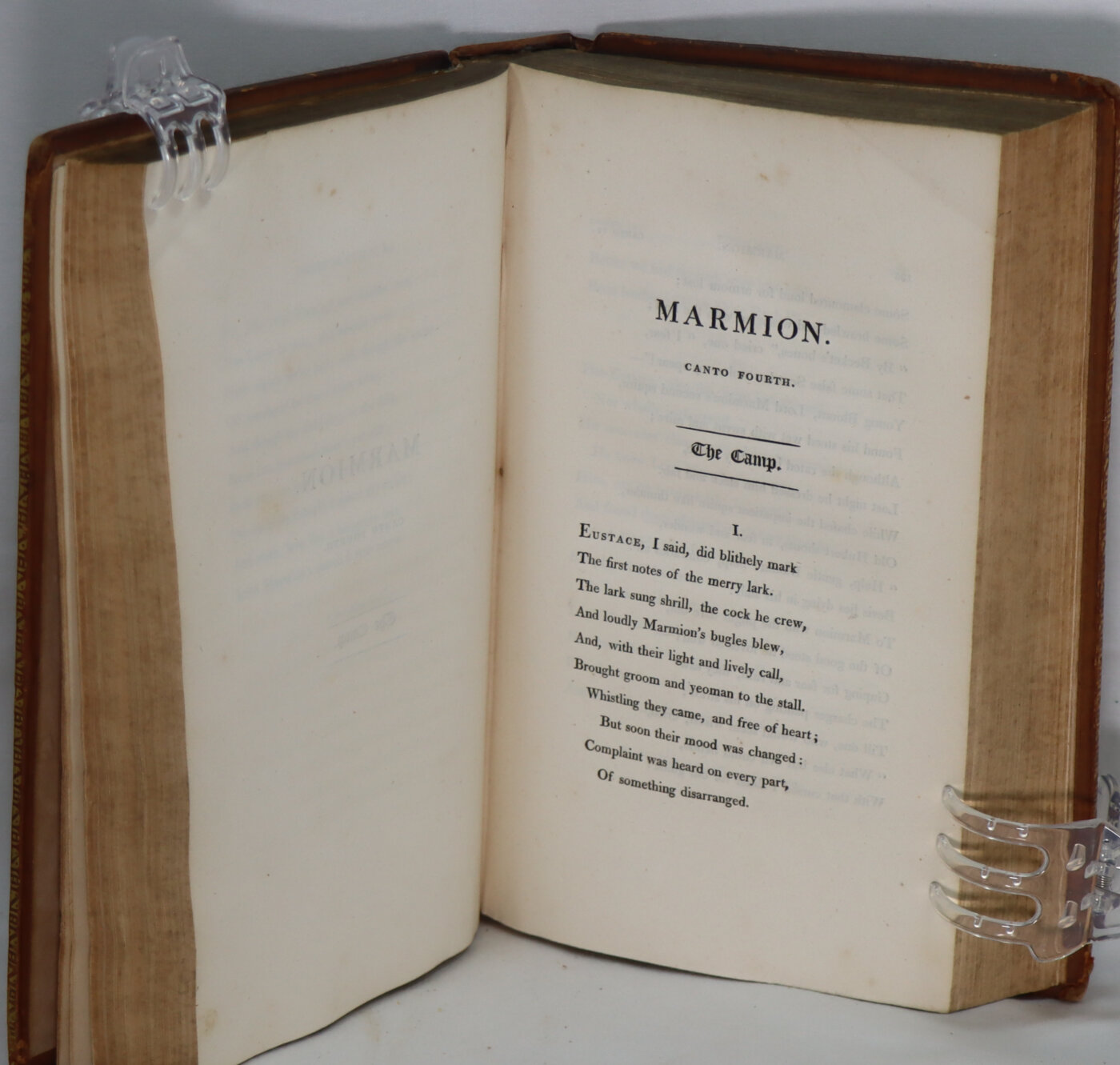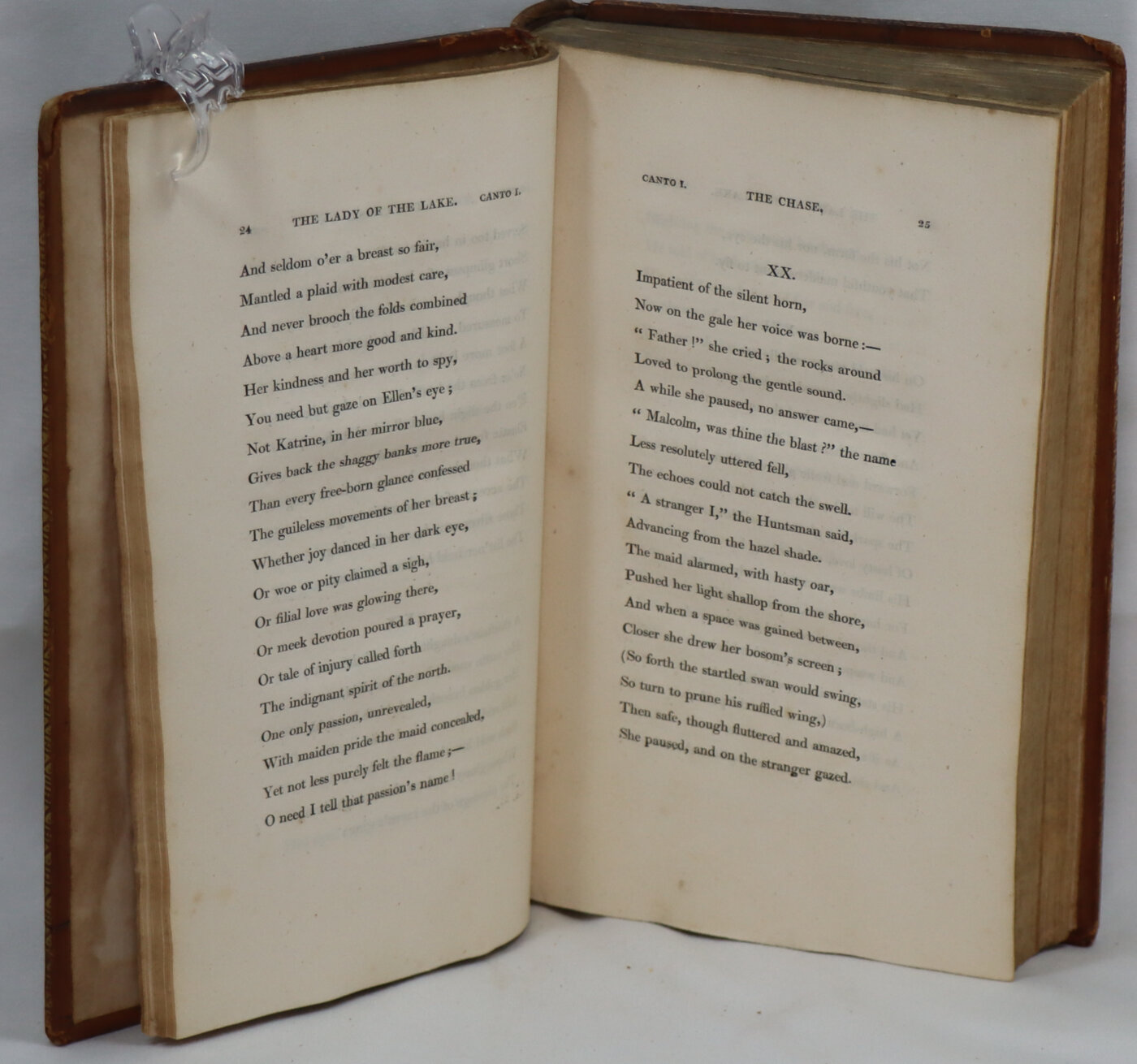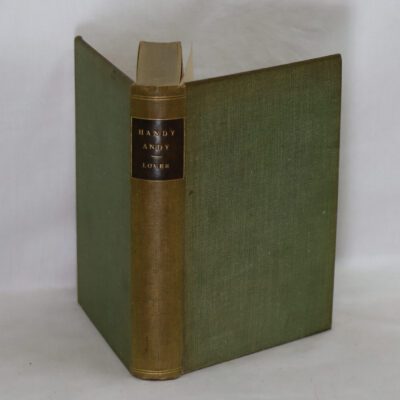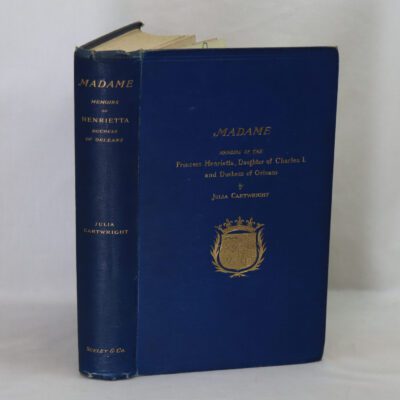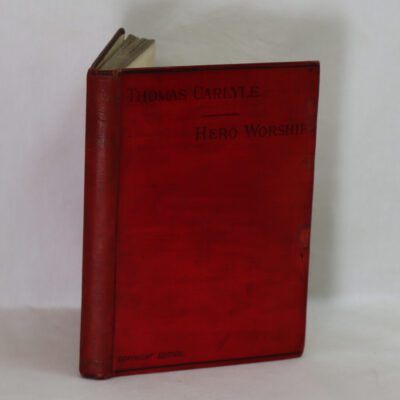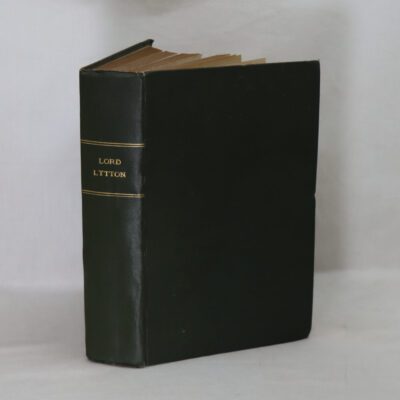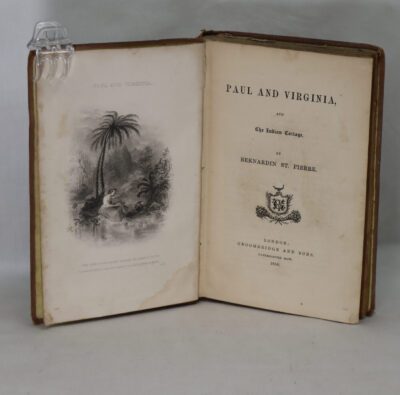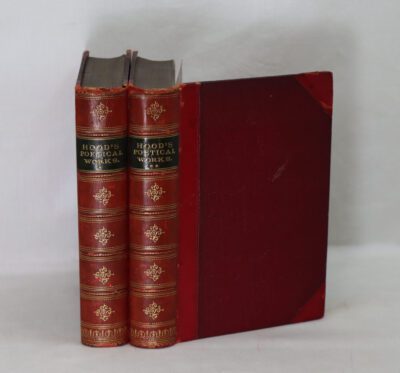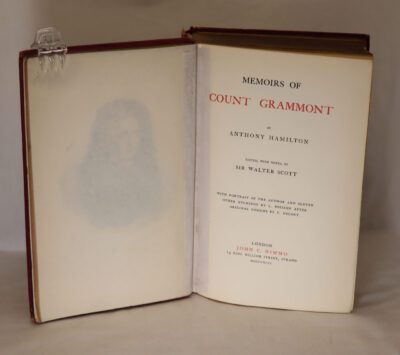Lady of the Lake. Marmion. Two Volumes.
By Walter Scott
Printed: 1810
Publisher: Archibald Constable & Co. Edinburgh
| Dimensions | 14 × 22 × 4 cm |
|---|---|
| Language |
Language: English
Size (cminches): 14 x 22 x 4
Condition: Good (See explanation of ratings)
FREE shipping
Item information
Description
Tan calf binding with black title plate, gilt decoration, banding and title on the spine. Gilt and black line decorative edging and panel on the boards. Dimensions are for one volume.
- We provide an in-depth photographic presentation of this item to stimulate your feeling and touch. More traditional book descriptions are immediately available.
- Note: These books carry the £5.00 discount to those that subscribe to the F.B.A. mailing list.
Two distinct bound volumes, unusually but beautifully crafted.
Lady of the Lake. Very rare. Hardcover. Condition: Very good to good. No Jacket. First edition year. Fifth imprint. The binding shows some skillful restoration, hence the price. “Lady of the Lake” established the reputation of Scott, who is probably the most popular English author after Shakespeare. It was popular and widely read.
MARMION: A Tale of Flodden Field. Rare: Hardcover. Condition: Very good to good. No Jacket. A Fifth edition to match the above Lady of the Lake. The binding shows some skillful restoration, hence the price.
Sir Walter Scott, 1st Baronet FRSE FSAScot (15 August 1771 – 21 September 1832), was a Scottish novelist, poet and historian. Many of his works remain classics of European and Scottish literature, notably the novels Ivanhoe (1819), Rob Roy (1817), Waverley (1814), Old Mortality (1816), The Heart of Mid-Lothian (1818), and The Bride of Lammermoor (1819), along with the narrative poems Marmion (1808) and The Lady of the Lake (1810). He had a major impact on European and American literature.
As an advocate, judge, and legal administrator by profession, he combined writing and editing with his daily work as Clerk of Session and Sheriff-Depute of Selkirkshire. He was prominent in Edinburgh’s Tory establishment, active in the Highland Society, long time a president of the Royal Society of Edinburgh (1820–1832), and a vice president of the Society of Antiquaries of Scotland (1827–1829) His knowledge of history and literary facility equipped him to establish the historical novel genre as an exemplar of European Romanticism. He became a baronet of Abbotsford in the County of Roxburgh, Scotland, on 22 April 1820; the title became extinct upon his son’s death in 1847.
Condition notes
Want to know more about this item?

Related products
Share this Page with a friend



